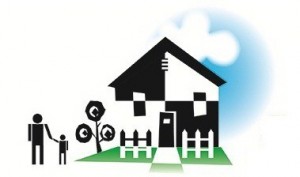 Welcome to the new website devoted to our “Thriving Communities” campaign. We’d like this space to become a Vermont forum for a continuing discussion of fair housing and affordable housing. These are two distinct but overlapping public policy concerns. They have something in common that we’ll get to in a moment.
Welcome to the new website devoted to our “Thriving Communities” campaign. We’d like this space to become a Vermont forum for a continuing discussion of fair housing and affordable housing. These are two distinct but overlapping public policy concerns. They have something in common that we’ll get to in a moment.
Fair housing means the absence of housing discrimination. The federal Fair Housing Act, passed in 1968, sought to give Americans the right to live where they choose without begin discriminated against on the basis of race, color, national origin, or other protected characteristics. Vermont followed up with its own fair housing law about two decades later, expanding the list of protected categories.
Alas, housing discrimination is still with us. Thousands of individual complaints are filed across the country every year, and Vermont has its own share of violations. But beyond the individual cases are systemic, or organizational obstacles to fair housing choice, often in the form of planning, zoning or governmental policies that effectively restrict where certain people – particularly, those of lower income – can live. Nearly half a century after the Fair Housing Act was passed, much of our nation remains heavily segregated by race and by economic status.
Affordable housing, by the standard definition, is housing that doesn’t consume more than 30 percent of a household’s income. Families who pay more than that are termed “burdened”; and those who pay more than 50 percent, “severely burdened.” Unfortunately, these terms apply to a large share of Vermont’s renters. That’s because (a) market prices put housing out of reach, and (b) there aren’t anywhere near enough subsidized housing units to accommodate lower-income renters.
One goal of “Thriving Communities” – and of the U.S. Department of Housing and Urban Development, a key sponsor – is to reduce pockets of poverty and to proactively promote inclusive communities of high opportunity. We want to encourage municipalities to welcome more affordable housing – multi-family housing, in particular – that’s located in mixed-income neighborhoods, in close proximity to town centers, transit and other vital services.
OK, so what do these two issues – fair housing and affordable housing — have in common? They’re both off the political radar. Housing segregation and unaffordability are both major national problems, disadvantaging tens of millions, but they get very little attention from presidential candidates or Sunday talk shows.
Why the disconnect? We welcome your comments on this or on our posts to come. We’ll try to be newsy.